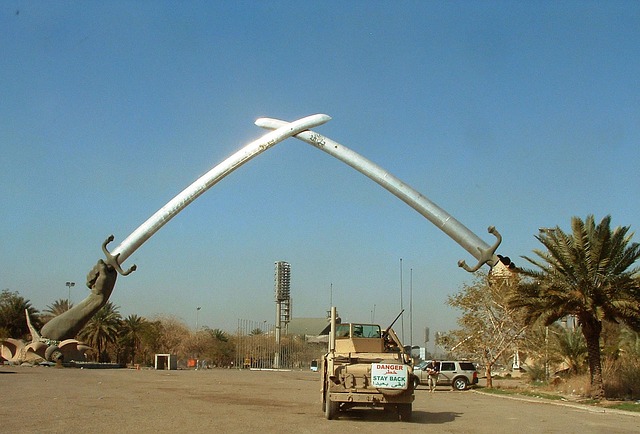
The Middle East now has the dubious honour of spawning two of the world’s most notorious terrorist organisations: al-Qaeda and the Islamic State (IS). While IS experienced significant losses in 2016, it remains a potent terrorist threat having established regional affiliates that have reignited terrorist activity in other countries. Aided by the conflicts in Syria, Iraq and Yemen, al-Qaeda regained traction in 2016, after years of decline.
The region remained an epicentre of terrorism in 2016. There was a marked increase in terrorist violence fueled by insurgency, sectarian conflict and the fallout from the political upheavals of the Arab Spring. Iraq, Syria and Yemen were the worst affected, creating space for not only separatist and insurgent groups but jihadist terrorist organisations as well.
Jihadist terrorism exists in both Western democracies and in the Middle East, but its roots in each location are different. In the West, jihadist terrorism is a potent but limited threat, fanned by alienation and existential grievances; in the Middle East, it’s founded in the fundamental instability of the region. Terrorism in the Middle East can’t be separated from existing regional political and sectarian conflicts and ideologies.
Syria has become a stratified rock of various conflicts. The principal players include the Assad regime, the fractured group of rebel forces, ethnic Kurds opposing the Syrian regime who have carved out an autonomous territory and members of the coalition against IS.
Syria has also become a geopolitical battleground for Saudi and Iranian influence and their respective allies, the US and Russia. All have been pursuing their own strategic counterterrorism interests. The conflict also allowed Islamic militants to take advantage of the unrest and carve out territory for a so-called caliphate during 2014 and 2015.
In Syria, the second half of 2016 was dominated by the brutal battle for Aleppo, a key fighting ground between Assad’s troops and rebel forces. Government forces in November launched a renewed assault on Aleppo with Russian, Iranian and Shia militia support and retook most of the city. Some of the most effective rebel groups have included jihadist organisations such as Jabhat Fateh al-Sham (formerly Jabhat al-Nusra), which has complicated the coalition’s ability to back the rebel effort. While Jabhat Fateh al-Sham, IS and other rebel groups lost ground in 2016, the conflict appears far from finished. Instead, it’s likely to transform from a civil war into an insurgency campaign by rebel and jihadist groups.
In Iraq, the situation remains equally unstable. Since it was first published in 2014, the Global Terrorism Index has consistently rated Iraq as one of the countries most affected by terrorism. The UN Assistance Mission for Iraq (UNAMI) recorded a total of 19,266 Iraqi civilian casualties from acts of terrorism, violence and armed conflict in 2016, including 6,878 killed and 12,388 wounded.
Despite a 30% decline in terrorist attacks in 2015, the number surged again in 2016 as IS reinvigorated its suicide bombing campaign and key battles were fought in Fallujah and Mosul to wrest territorial control from the group. As IS began to lose territory in Iraq it resorted to more traditional terrorist tactics against security personnel and civilians in areas outside of its immediate control.
In 2016, IS remained the main terrorist threat in Iraq. It remains the most lethal terrorist group in the country, responsible for more than 11,000 deaths since its founding. It’s likely that the real figure is much higher, noting that 50,000 terrorist-related deaths have not been claimed by terrorist groups. The next deadliest group in Iraq is al-Qaeda, IS’s precursor. Other groups active in Iraq include the al-Naqshabandiya Army, a Sufi group that’s been active since 2006, and the Mukhtar Army, a Shia militia group. Iraq is also beset by Shia militia groups, most of whom have been incorporated into or sanctioned by the Iraqi government.
The broad political and societal issues underlying Iraq and Syria’s terrorism problem will continue to threaten the region’s security. While IS has experienced significant territorial losses, it’s also demonstrated its ability to regain territory, as occurred late last year in Palmyra. It’s unclear whether Russia will be able to sustain its substantial role in Syria, but there’s every indication that a Russian-led coalition, comprising Iran and Turkey, will continue to push their collective interests and bolster the Assad regime at the expense of US, Gulf and coalition interests. Turkey’s détente with Russia is likely to continue as all parties in the conflict soften their opposition to the Assad regime.
It remains to be seen whether the new Trump administration will change US policy towards IS in a significant way. The incoming administration promised broader action against IS but has also laid out a non-interventionist posture. A strategy for the defeat of IS in Raqqa is yet to be publicly announced, but the campaign will likely continue its focus on airstrikes against jihadist targets and training camps. As the battle of Mosul in Iraq continues into 2017, national political reconciliation and reform efforts will need to be stepped up in Iraq, Syria and Yemen if there’s to be any serious resolution of the conditions underlying the terrorism threat.

